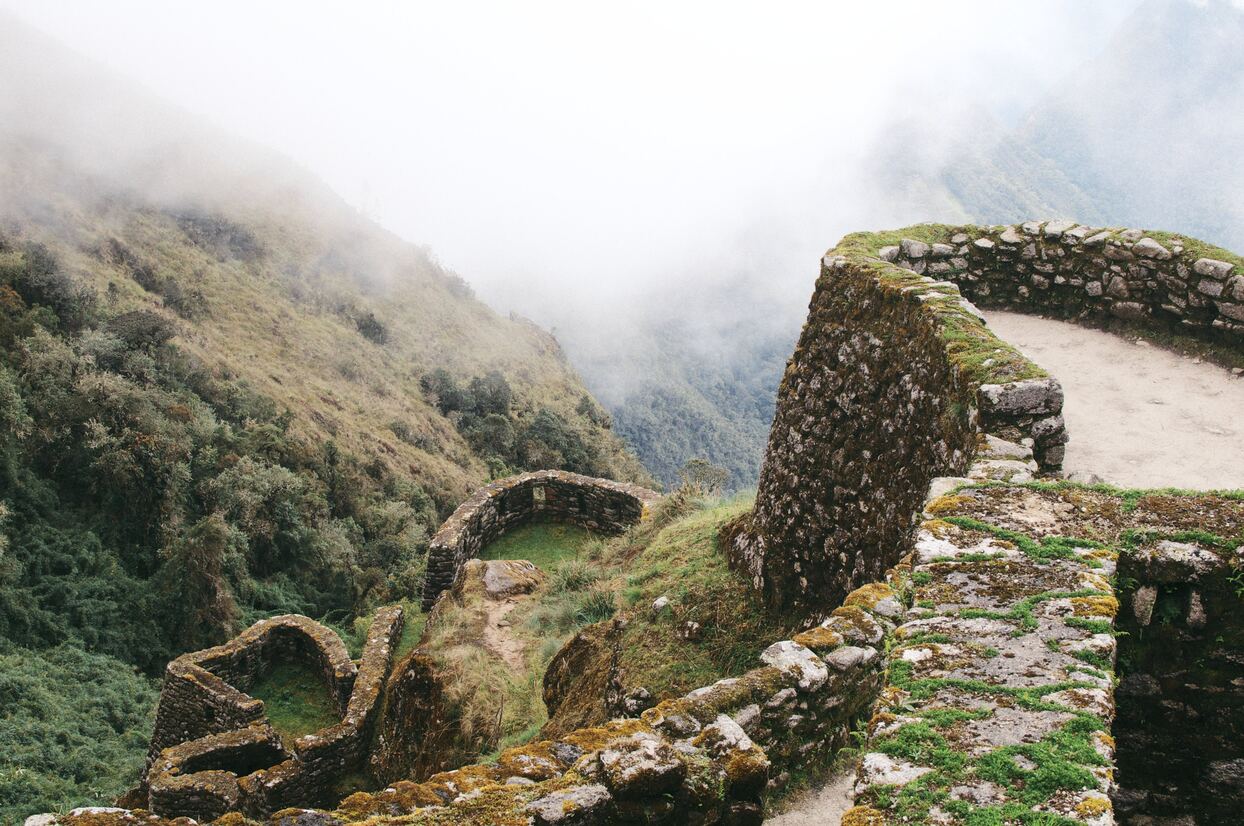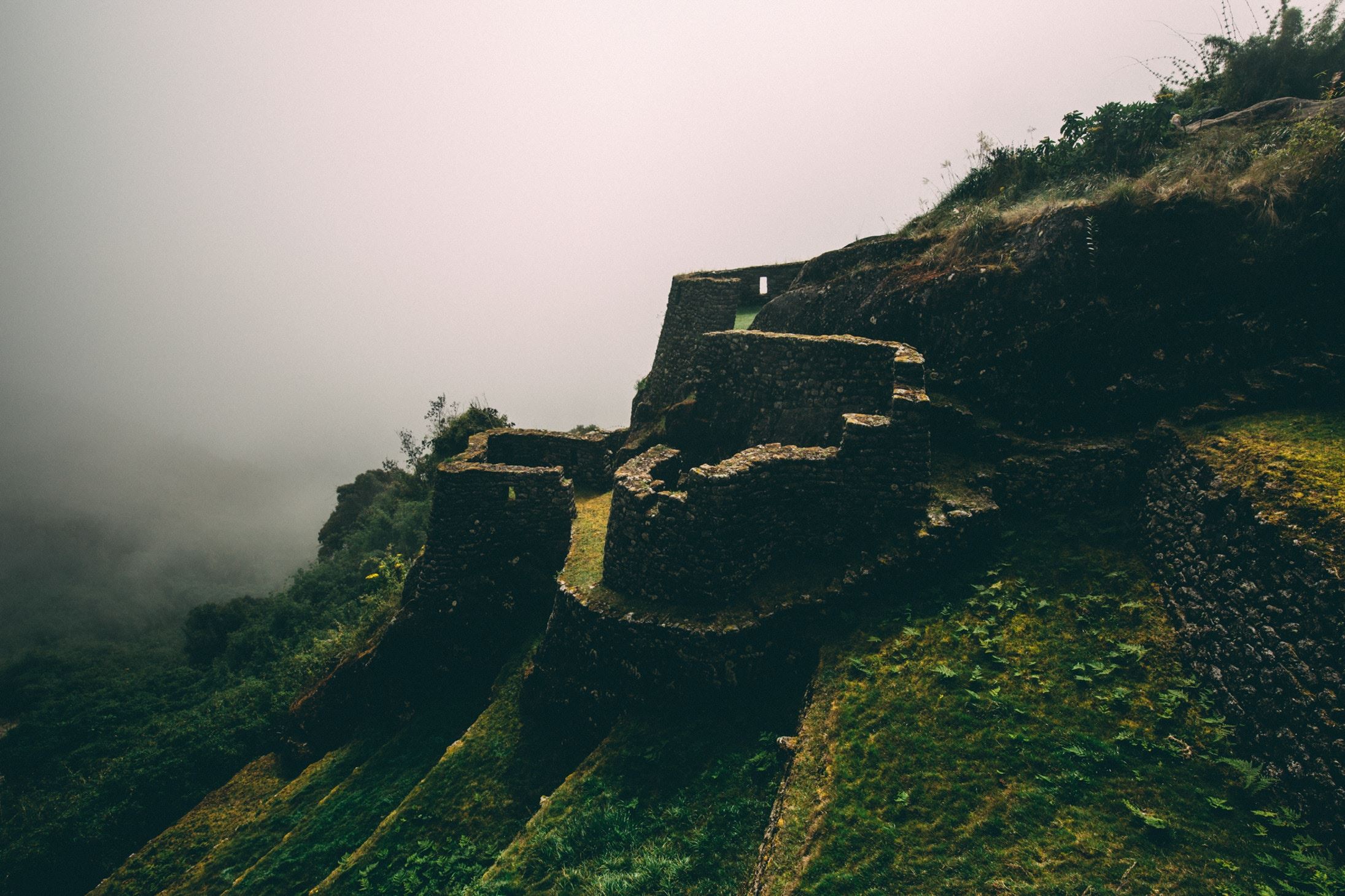
A day-by-day breakdown of the 5-day Inca Trail hike
The Inca Trail to Machu Picchu is one of the most famous multi-day treks in the world. But we’re sure you’ve got loads of other questions. Like how long is it really? What can you expect on each day? And how fit do you have to be to complete it?
How long is it?
This depends on which Inca Trail you’re talking about. The Great Inca Trail, aka the Qhapaq Ñan, is 25,000 miles long, spanning seven modern-day countries…But don’t worry, you won’t be trekking that far!
Clever marketing means that when most people think of the Inca Trail they’re picturing the world-renowned section of the trail that starts at Kilometer 82 in the Sacred Valley and enters Machu Picchu through the Sun Gate. This Inca Trail measures 28 miles (45 km) from start to finish.
Hiking 28 miles over five days may not sound like much. But this is before you factor in the altitude and the pendulously steep inclines and descents. That said, even these obstacles can be overcome through personal determination, pre-trek acclimatization in Cusco, and embracing the assistance of personal porters and hiking poles. We speak from experience…
Read on for a day-to-day breakdown of exactly what to expect on the 5-day Inca Trail to Machu Picchu:

Day 1: KM82 – Huayllabamba, 7 miles
The first day provides a relatively gentle introduction to the trek. You’ll be transferred from your hotel to Km. 82 (2657 m.a.s.l. – 8717.19 ft.), where you will meet your porters and equipment. Setting off on the trek, you’ll pass through semi-arid terrain and a tiny village along the Urubamba River, enjoying magnificent views of snow-capped mountains. You will leave the Urubamba valley (the views of the valley and the Llactapata ruins are awesome) before setting off up the Kusichaca River to your first campsite at Huayllabamba (2963 m.a.s.l – 9721.13 ft.).
Day 2: Huayllabamba – Pacaymayo, 7.5 miles
After a healthy breakfast, you will approach Warmihuañusca pass (aka Dead Woman’s Pass 4230 m.a.s.l – 13877.95 ft.). After a grueling ascent, you will reach the top of the pass. From the summit, you can spy the Runkurakay ruins in the distance. At the head of the gorge, you will stop at Pacaymayo (3626 m.a.s.l – 11896.33 ft.), your camp for the night.

Day 3: Paycaymayo – Phuyupatamarca, 5 miles
The real archeological fun begins today. After a short ascent you’ll reach the Runkurakay circular ruins, surrounded by great forests and steep hills. After a good rest, you will hike on well-preserved Inca Trail to Sayacmarca ruins (3640 m.a.s.l. – 11942.26 ft.). From Sayacmarca the stone road enters the jungle, towards the Phuyupatamarca ruins. After crossing ‘The Tunnel’ (a natural cavity produced by a landslide but adapted by the Incas) you will continue through a landscape of moss and ferns. After a short, but action-packed day you will reach the Phuyupatamarca ruins (3670 m.a.s.l – 12040.68 ft.), your camp for the night (which is exclusive to groups on the 5-day itinerary).
Day 4: Phuyupatamarca – Machu Picchu, 6 miles
After an early start, you’ll descend for three hours until reaching Wiñaywayna (2693 m.a.s.l – 8835.30 ft.) – after Machu Picchu the most important site on the Inca Trail. After visiting the ruins you will continue towards Intipunku (aka the Sun Gate, 2739 m.a.s.l – 8986.22 ft.), the showstopping climax of your trek. From this vantage point, Machu Picchu (2400 m.a.s.l – 7874.02 ft.) looks unreal and beautiful. You will visit the citadel before heading down to Aguas Calientes town, for a well deserved night in a hotel.
Day 5: Machu Picchu Tour
After an early breakfast, you’ll be met by your guide at the hotel to start your second visit to the Sanctuary of Machu Picchu. Feeling rested and refreshed, you will learn about the site’s fascinating history and you’ll also get a chance to summit Huayna Picchu or Machu Picchu Mountain. Once you’ve drunk your fill of this bucket list destination, you’ll return to Aguas Calientes to catch a train back to Cusco.
Part of the whole
The Incas originally built “Inca trails” to connect their once massive empire, which stretched from Quito in Ecuador down to Santiago in Chile. Cusco, the capital, was the hub of the empire and numerous stone pathways extended from the city and crisscrossed through the region, connecting major sites and places of military importance. The 5-day trek to Machu Picchu is but one (admittedly magnificent) section of this massive network.

The word Cusco means “navel” in the native language of the Incas, and it was here that the four suyus (regions) of the empire met. These regions were connected by thousands of miles of Inca trails that ranged in width from a few feet to a dozen yards. This network of trails, known as the Qhapaq Ñan in Quechua, is of special importance to SA Expeditions as we’ve spent several years trekking and rediscovering over 3000 miles of Inca road with a team of humans and llamas.
With no written language, the empire relied on relay runners called chaskis who darted down the paths delivering oral messages as well as quipus, collections of dyed and knotted strings that conveyed messages that remain (almost) indecipherable to modern man.
For loads more first-hand information about the classic Inca Trail to Machu Picchu check out some of our other blogs:
The many benefits of doing the 5-day Inca Trail with SA Expeditions
An in-depth, first-hand account of hiking the Inca trail
What to pack for the Inca Trail
Weather in Peru
Now that you’ve done your homework, all that remains is to book the Inca Trail adventure of a lifetime. Check out our most popular classic Inca Trail to Machu Picchu itinerary or have one of our Destination Experts craft the bespoke itinerary of your choice.